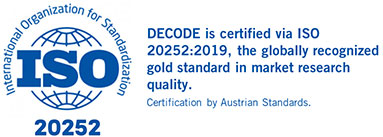Why do luxury houses like Dior transition from mixed case to all uppercase typography? The answer lies not in aesthetic preference, but in a robust psychological phenomenon that operates when consumers pursue conspicuous consumption goals.
Researcher Yining Yu (2022) from the Neuromanagement Laboratory of the Zhejiang University uncovered how and when letter case of brand names impacts brand perception and drive brand preference with significant implications for understanding when and why letter case of brand names influences consumer choice.
Key Insights
Uppercase brand names increases perceived brand premiumness
The effect operates only for socially visible products where conspicuousness serves a signaling function
Inconspicuous consumers reverse the effect, perceiving uppercase as gaud.
Premiumness perceptions translate to purchase behavior only when consumers hold status-expression goals
The Empirical Foundation
The research demonstrates that consumers consistently perceive brands using uppercase letters as more premium than brands using lowercase letters. Uppercase implicitly activates premium associations with the brand. This "Uppercase Premium Effect" represents more than typographic convention; it proves that design elements shape how consumers perceive a brand by activating associations.
The effect emerges from understanding what consumers seek to accomplish through premium purchases. Conspicuous products serve primarily as signals to others—vehicles for displaying wealth, prestige, and status through public consumption. When consumers pursue these status-signaling goals, visual prominence becomes strategically valuable.
Uppercase typography enhances this signaling capacity by increasing visual distinctiveness, making the brand more likely to be noticed and recognized in social contexts. The letter case choice aligns with the consumer's objective of making their purchase visible to others. What makes this particularly powerful is the speed at which these judgments occur. Consumers form assessments of brand premiumness within split seconds of visual exposure, drawing on accumulated experience to infer quality and positioning from available cues.
When status signaling matters, letter case serves as an immediately accessible signal of a brand's capacity to fulfill that goal.
When the Effect Operates—and When It Doesn't
The uppercase premium phenomenon operates within specific contextual boundaries determined by consumption goals.
Conspicuous vs. Inconspicuous Consumption:
The effect depends critically on social visibility—products consumed privately show diminished sensitivity to conspicuous branding signals. When consumers purchase for private use or functional purposes rather than social display, uppercase typography matters far less. The same consumer might be influenced by uppercase when buying a watch to wear publicly but remain unaffected when purchasing home appliances.
Individual Differences in Status Motivation:
Some consumers perceive overt conspicuousness as ostentatious, preferring subtle luxury cues such as discreetly placed logos. These individuals pursue "inconspicuous consumption" goals—they seek quality and exclusivity without overt status signaling. For purchases driven by these goals, uppercase treatments may prove counterproductive.
Brand Familiarity and Goal Activation:
The effect proves strongest for unfamiliar brands, where consumers lack established associations and rely more heavily on immediate visual cues to form judgments. When encountering new brands while pursuing conspicuous consumption goals, typography becomes a primary signal of whether the brand can fulfill those objectives.
Implications for Practice
Letter case represents more than aesthetic choice - it constitutes a strategic positioning tool that requires deliberate alignment with product attributes and target consumption goals. The association triggered by the letter case needs to align with the positioning and the consumption goal.
Watch-Out
The research focused on the letter case of brand names. Using uppercase in headlines or other text has significant downsides: uppercase words take longer to read and the messages are harder to memorize.
Concluding Perspective
The uppercase premium effect illustrates a broader principle in consumer behavior: design elements influence valuation when they align with active consumption goals. Uppercase typography matters not because all consumers prefer it, but because it signals conspicuousness to those pursuing status-oriented consumption objectives.
Like to get more science insights?
Follow me on LinkedIn: https://www.linkedin.com/in/dr-dirk-held/






